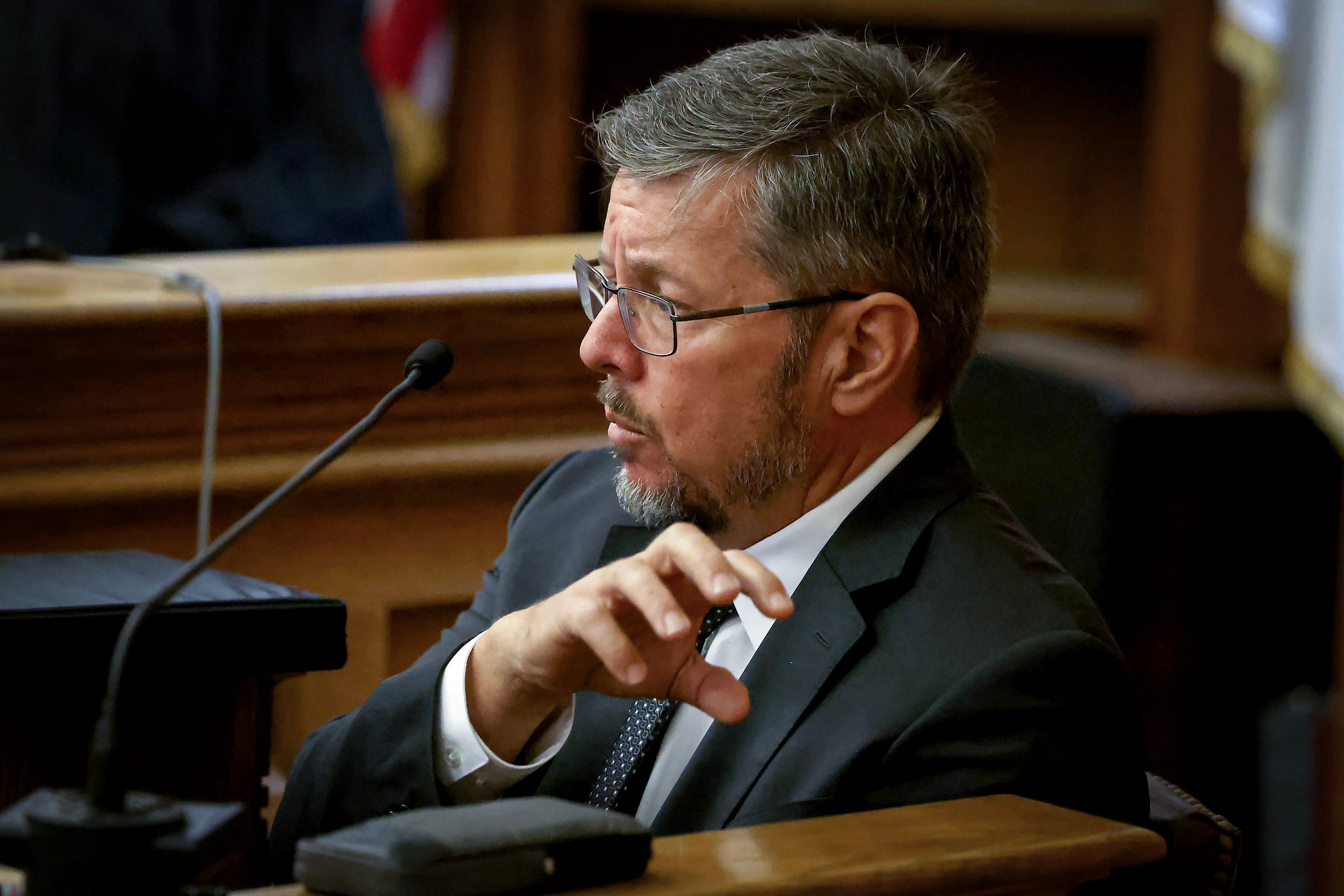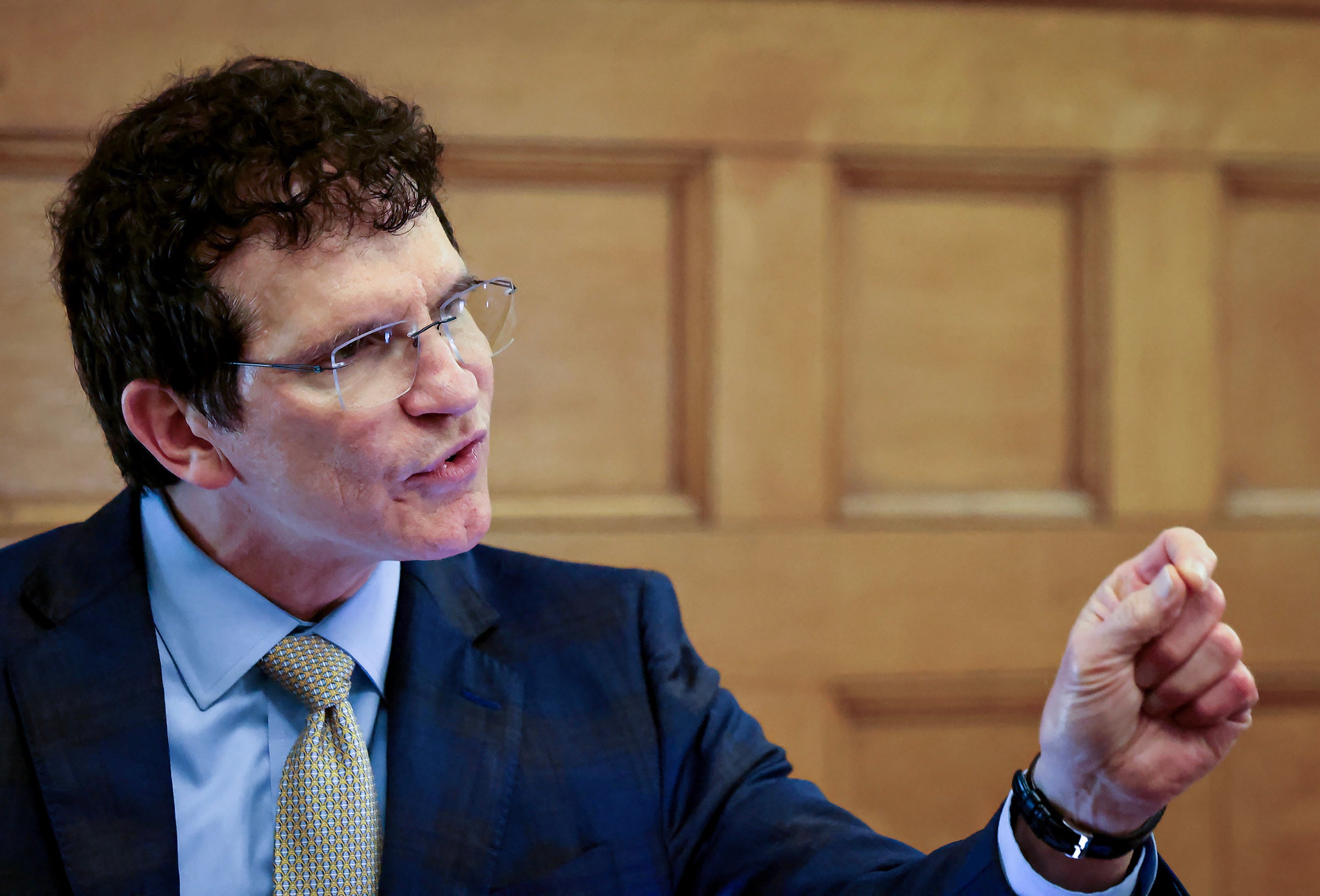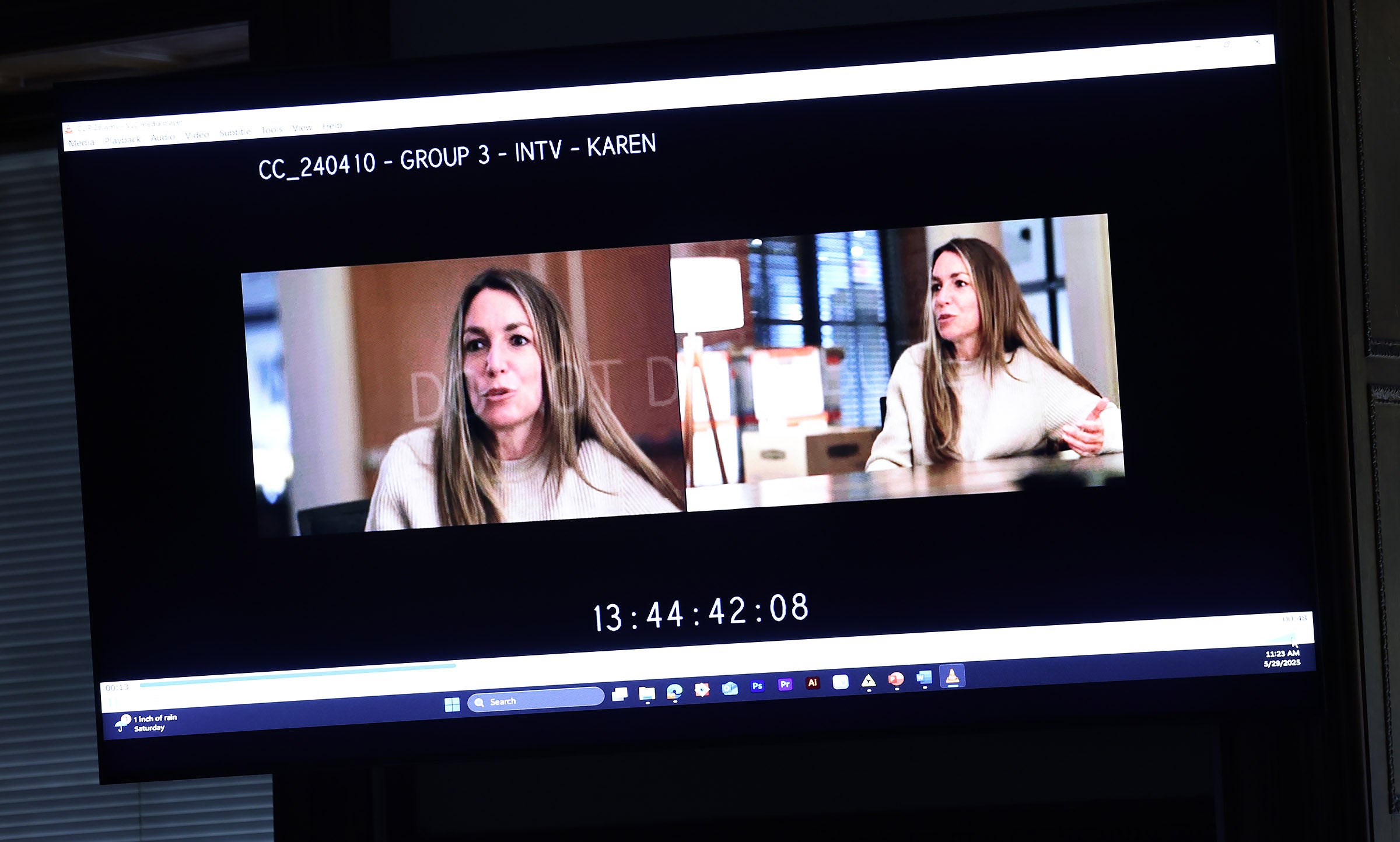Crime
Read’s defense team is now up, and she revealed who their first witness will be after court Thursday.
On the stand Thursday:
Noon update: Prosecution rests; defense to call first witness Friday
Prosecutors rested their case Thursday morning after accident reconstructionist Judson Welcher finished his testimony and left the stand. Judge Beverly Cannone sent the jury out of the courtroom for a brief recess at about 11:25 a.m. and spoke with the attorneys at sidebar.
Following the sidebar, Cannone called jurors back in and dismissed them shortly before 11:50 a.m., telling them the retrial is progressing ahead of schedule. She asked them to return Friday for a full day in court.
Now that the prosecution has rested, Karen Read’s attorneys will have the opportunity to call witnesses and present their case. Fielding questions from reporters outside the courthouse Thursday, Read said it remains “TBD” whether she will take the stand in her own defense — a generally rare occurrence.
She said the defense’s case will last “one-and-a-half to two weeks.” According to Read, the first defense witness will be Matthew DiSogra from DELTA |v|, a company whose experts specialize in accident reconstruction, biomechanics, event data recorders, and digital media, according to its website.
Asked to summarize the prosecution’s case, Read offered a one-word assessment: “Unjust.”
11:30 a.m. update: ‘I suspect I bored some of these people to death already,’ crash expert jokes as he finishes testimony

Karen Read’s Lexus SUV recorded 18 other “Techstream,” or trigger, events prior to Jan. 29, 2022, prosecution accident reconstructionist Judson Welcher testified Thursday.
Wrapping his cross-examination of Welcher, defense attorney Robert Alessi turned his attention to the data the vehicle recorded in the monthslong span before Read allegedly backed into her boyfriend, Boston Police Officer John O’Keefe.
“For all the other events that are recorded, … you’re not concluding that any of those were collisions, correct?” Alessi asked. Welcher said he didn’t take a close look at the other trigger events, given they were outside the focus of his accident reconstruction.
Earlier in Thursday’s cross-examination, Alessi asked Welcher whether glass shards recovered from Read’s rear bumper came from the cocktail glass O’Keefe purportedly held during the alleged collision. While Welcher said he was aware of the glass on the bumper, he explained, “I didn’t have an opportunity to inspect the glass.”
Alessi fired back with a hypothetical: If the glass from the bumper doesn’t match the glass investigators found in the snow where O’Keefe’s body had lain, wouldn’t that be contrary to Welcher’s theory of the alleged collision? Welcher said the answer would depend on whether the glass broke from contact with the vehicle’s rear or contact with the ground.
“No, it wouldn’t contradict it,” he added. “I would want to know where that glass came from.”
Massachusetts State Police Crime Lab forensic scientist Christina Hanley testified last week that two of the glass shards from Read’s bumper did not match a broken cup investigators found at the scene. Hanley said she did not test three other shards due to their size and condition.
Alessi turned his attention to the contact Read’s SUV made with O’Keefe’s parked car as she pulled out of her boyfriend’s driveway to search for him at about 5:07 a.m. on the 29th. The defense team has pointed to that impact as an alternate explanation for Read’s shattered right taillight.
While Welcher previously agreed the two vehicles made contact, he testified that he ruled out the possibility that Read’s taillight broke or cracked during the impact. The moment was captured on O’Keefe’s Ring home security camera, and Alessi questioned Welcher at length about levels of distortion in Ring footage and other factors that might impact the video and, in turn, his analysis.

Alessi adopted a firmer and, at times, more combative approach Thursday than he did during the prior day’s questioning, even raising his voice occasionally. Pointing to a digital image from Welcher’s presentation that appeared to show Read’s taillight near O’Keefe’s vehicle, he asked, “Are you saying that that slide does not show contact between the taillight of Ms. Read’s Lexus and any part of the Chevy Traverse?”
Welcher estimated the taillight was “probably within an inch” of making contact with O’Keefe’s Chevy. “We tried all these different angles, which is why all these slides are in there,” he testified.
Asked why there wasn’t a clear gap depicted in the digital image, he explained flat, two-dimensional images tend to lose some of their depth.
“That’s why I showed it from all these different angles,” he added.
Pivoting to the suspension of Read’s Lexus, Alessi suggested the SUV could be raised three inches or lowered two. Welcher said his company, Aperture LLC, acquired an identical Lexus SUV for testing and matched its measurements to those recorded while Read’s car was housed at the Canton Police Department in early 2022.
Alessi asked Welcher for the suspension height of Read’s SUV at the time it made contact with O’Keefe’s car the morning of Jan. 29, 2022. Welcher said Aperture assumed the vehicle was at the same height as the measurements taken at the Canton Police Department, as that was the best information they had.
“Well, that information isn’t very good,” Alessi fired back, noting the vehicle’s suspension adjusts automatically at speeds greater than 20 mph. Welcher, however, pointed out Read was reversing much more slowly in O’Keefe’s driveway, meaning the suspension likely would have been the same height as when the vehicle is stationary.
Alessi asked if Welcher knew whether the vehicle’s suspension locks during the testing of its infotainment system, and Welcher said he did not. He also confirmed he didn’t know what the SUV’s suspension height would have been during the events outside 34 Fairview Road after midnight on the 29th.
“So you don’t have the suspension height for that key date, do you sir?” Alessi asked.
“I only have it two days later,” Welcher agreed.
Alessi asked how common “Techstream” events were in the time Read owned the Lexus SUV, and Welcher tallied 18 events prior to the day O’Keefe died. Alessi pointed out the impact between the two SUVs in O’Keefe’s driveway didn’t produce a “Techstream” event.
“Correct, it was too minor,” Welcher confirmed.
Asked why the vehicle did record a “Techstream” event for an alleged impact with O’Keefe, who weighed thousands of pounds less than his SUV, Welcher explained the system in Read’s Lexus is actually triggered by factors such as excessive acceleration, steering, or braking.
In other words, Alessi noted, the “Techstream” system doesn’t necessarily register when a collision occurs. With that, he concluded his cross-examination.
On redirect examination, Welcher told special prosecutor Hank Brennan that even though the Ring cameras at O’Keefe’s home were later replaced, his findings about the driveway collision weren’t affected. He also denied having any concern that information from his scans was somehow tainted, compromised, or inadequate.
“No, the data’s fine,” Welcher testified.
Brennan asked a series of pointed questions about whether Welcher had ever used Signal or a similar encrypted messaging app to communicate with prosecutors — an apparent dig at defense attorney Alan Jackson’s use of Signal to communicate with a defense crash expert. Welcher denied using Signal and said he would never use an encrypted app for the purpose of avoiding having his communications tracked.
Alessi stepped up for a few additional questions, mainly about confirmation bias. Welcher testified that he started working on Read’s case “with the hypothesis that the Lexus didn’t contact Mr. O’Keefe,” then looked at evidence to either include or exclude that hypothesis.
“So theoretically,” he added, “my confirmational bias starts with a bias that it didn’t happen.”
He said he didn’t include hypotheses in his presentation if he was able to eliminate them.
“I mean, I had 130 slides. I suspect I bored some of these people to death already,” Welcher joked. “So I didn’t include everything.”
“Dr. Welcher, you’re all set,” Judge Beverly Cannone told the crash expert after Alessi had finished
“Oh my god, thank you,” Welcher replied with relief.
After Welcher left the stand, Brennan played a clip from Read’s April 2024 interview for an Investigation Discovery docuseries. In the video, Read recalled speculating about her potential culpability in the immediate aftermath of O’Keefe’s death and said she raised those concerns with defense attorney David Yannetti soon after hiring him.
“Like, ‘David, what if … I ran his foot over, or, or, what if I clipped him in the knee and he passed out or went to care for himself and he threw up or passed out?’” Read recalled in the clip. “And David said, ‘Yeah, then you have some element of culpability.’”

9:30 a.m. update: Lawyers clash over material in crash expert’s presentation
Thursday morning began with the lawyers clashing over whether prosecution crash expert Judson Welcher “adopted” some of the analysis or findings from Massachusetts State Police Trooper Joseph Paul or medical examiner Dr. Irini Scordi-Bello.
In a continuation of a brief hearing from Wednesday afternoon, defense attorney Robert Alessi accused Welcher of not only reviewing and considering documents prepared by Paul and Scordi-Bello, but adopting some of their key findings. Paul, a State Police crash analyst, examined Karen Read’s SUV and testified for the prosecution in Read’s first trial.
Alessi paid particular attention to a photo Welcher used in his presentation that depicted Paul’s testing of Read’s SUV in 2022. Alessi pointed specifically to the odometer reading visible in the photo, alleging Welcher used the reading as a starting point for his determination of timestamps and locations in his analysis of the SUV’s activity on Jan. 29, 2022.
In fact, Alessi argued the events memorialized by Paul during his examination of Read’s vehicle “provide the foundation for Dr. Welcher’s entire analysis.”
He also alleged Welcher “adopted” the autopsy report Scordi-Bello prepared, adding, “It couldn’t be any more obvious his rooting in this document and his reliance upon in.”
Alessi argued experts can’t cherry-pick information from documents like the autopsy report while avoiding questions about the findings on cross-examination. He sought permission to question Welcher about his thoughts on the work and findings produced by Paul and Scordi-Bello.
However, special prosecutor Hank Brennan argued there is no case law to support the defense team’s request. He pointed out Read’s lawyers have already cross-examined Scordi-Bello about her finding that O’Keefe’s manner of death could not be determined. The defense can’t repeat that finding during Welcher’s cross-examination simply because they find it helpful to their case, Brennan argued.
He further accused Read’s lawyers of trying to “sneak in” inadmissible opinions, adamant that Welcher did not rely on Paul’s analysis or reports or Scordi-Bello’s conclusion of an undetermined manner of death.
Judge Beverly Cannone ultimately sided with prosecutors, barring Alessi’s requested line of questioning.
Livestream via NBC10 Boston.
The prosecution’s accident reconstructionist is back on the stand Thursday in Karen Read’s murder retrial following an afternoon of painstaking cross-examination.
Aperture LLC’s Judson Welcher told jurors the damage to Read’s SUV was consistent with a collision with John O’Keefe around 12:32 a.m. on Jan. 29, 2022, as prosecutors allege. The biomechanical engineer also asserted O’Keefe’s injuries were consistent with being struck by a Lexus identical to Read’s SUV “and ultimately contacting a hard surface, such as frozen ground.”
Read, 45, is accused of backing her SUV into O’Keefe — her boyfriend of two years — in a drunken rage while dropping him off at a house party in Canton after midnight on the 29th. Yet while prosecutors allege Read left O’Keefe, a Boston police officer, to die in a blizzard, Read’s lawyers contend she was framed in a vast law enforcement conspiracy. They’ve suggested O’Keefe was actually beaten inside 34 Fairview Road and attacked by the homeowner’s dog.
Welcher agreed with special prosecutor Hank Brennan Wednesday that O’Keefe’s injuries were consistent with Read’s SUV striking him in a sideswipe collision or clipping.
But on cross-examination, defense attorney Robert Alessi pointed out Welcher was not the first crash expert to work with prosecutors on Read’s case. He name-dropped Massachusetts State Police Trooper Joseph Paul, who testified for the prosecution during Read’s first trial and appeared flustered under scathing questioning by the defense.
Aperture began its work on the case last September, more than two years after O’Keefe’s death. According to Alessi, the Norfolk County District Attorney’s Office paid Aperture more than $44,000 last November for its work on the case and signed a contract amendment in April authorizing an additional $325,000 payday.
In another line of questioning, Alessi asked Welcher whether he assumed that because Read’s taillight was shattered, it must have been damaged in a collision with O’Keefe’s arm. “That’s your conclusion, correct?” he pressed.
“My conclusion is there are taillight fragments, a broken glass, lacerations to his arm, and his DNA on the back of the vehicle in the area of the taillight,” Welcher answered.
“So you’re making assumptions, you’re taking what you view to be certain data, and you’re coming to a conclusion,” Alessi continued. “But that is based upon circumstantial information, correct? Is that fair?”
“Are you calling, like, pieces of taillight at the scene around his body circumstantial information?” Welcher asked with a slightly incredulous tone.
Pressed by Alessi later in the day, he also agreed it’s possible — though not necessarily probable — Read’s SUV could have veered off the road and onto a lawn under prosecutors’ version of events.
Alessi told Judge Beverly Cannone Wednesday he’s only halfway through his cross-examination of Welcher. Thursday will be a half day in court due to a prior scheduling conflict, the judge said.
The ongoing trial is Read’s second, after a hung jury last summer prompted a mistrial.

The latest on the Karen Read murder case
Sign up for our Extra newsletter to get updates from the retrial and other breaking news alerts delivered to your inbox.










